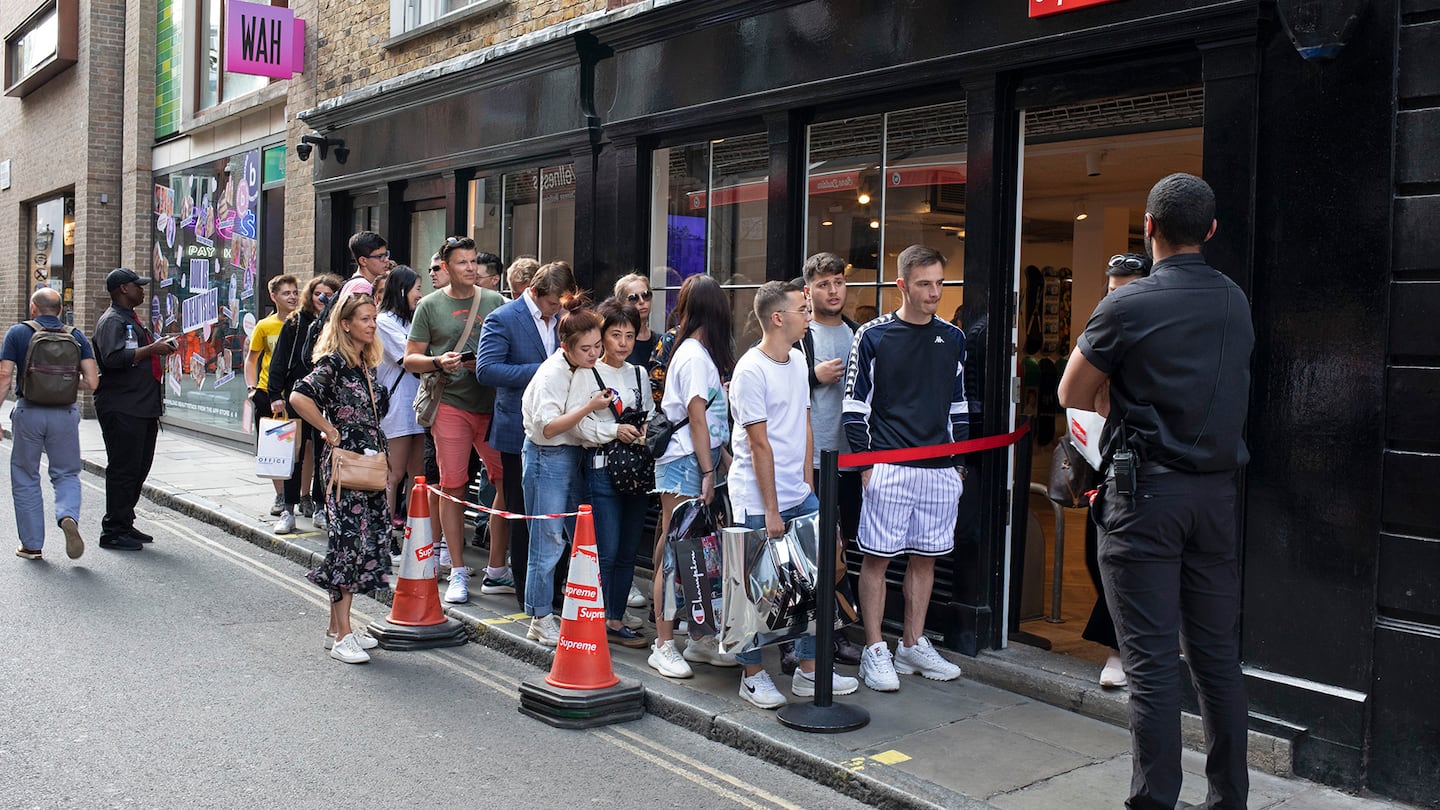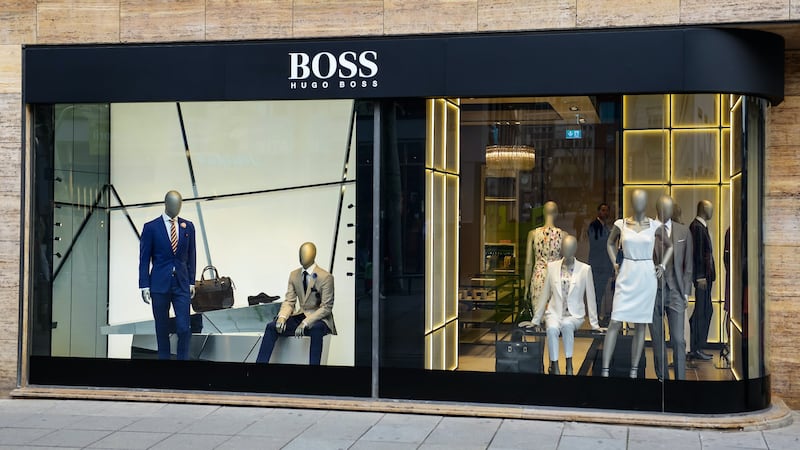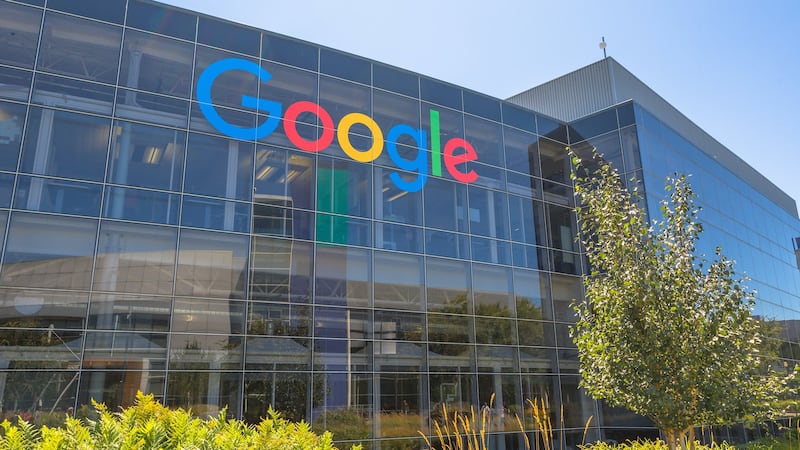
The Business of Fashion
Agenda-setting intelligence, analysis and advice for the global fashion community.

Agenda-setting intelligence, analysis and advice for the global fashion community.

VF Corp. hasn’t talked much about Supreme’s performance since it acquired the brand for $2.1 billion in 2020. A note deep inside its annual report released this week explains why.
The streetwear brand logged revenue of $523.1 million in the year ending in March, a 7 percent drop from $561.5 million the year before. Net income also decreased to $64.8 million, from $82.4 million.
Falling sales are a bad sign for any brand, but especially one whose owner has such lofty ambitions. By the late 2010s, Supreme was one of fashion’s most coveted brands, tapped for collaborations with the likes Louis Vuitton, Comme des Garçons and Thom Browne.
Denver-based VF Corp., which also owns Vans, The North Face and other brands, hoped to cash in on Supreme’s global appeal among young millennial and Gen-Z consumers driving the vast majority of luxury market growth, who’d queue for hours outside stores in the US, Japan and Europe on drop days, and compete with bots online to secure their favourite merch with the iconic red box Supreme logo. As recently as January 2022, VF Corp. was predicting Supreme would soon hit $600 million in annual sales.
ADVERTISEMENT
Supreme’s underperformance could be seen as the latest sign that the hype around streetwear has cooled. Many luxury brands and consumers have pivoted away from logo-heavy hoodies, puffers and sneakers in favour of more muted and elevated styles.
Or maybe it’s just that the model that propelled Supreme into a streetwear giant is feeling tired. Relentless drops and big-name collaborations have lost their novelty factor now that everybody is doing it. Plenty of consumers still want streetwear, they’re just turning to brands like Jerry Lorenzo’s Fear of God, which dethroned Supreme as the most searched brand on StockX last year. Or Aimé Leon Dore, which like Supreme has a must-visit Manhattan store for streetwear fanatics, but pedals a sportier, preppier aesthetic.
Newer, scrappy brands are also taking market share from larger streetwear players. In London there’s Corteiz and Ghana’s Free The Youth — closely connected to hip-hop and sports like football and basketball that are driving contemporary streetwear. Seventh Stores, also in London, has seen soaring sales — along with interest from retailers like Ssense — thanks to its minimalist, logo-less and elevated take on streetwear staples like hoodies and puffer jackets.
Streetwear was initially born out of countercultures like hip-hop, skating and graffiti in the 1980s and 1990s (James Jebbia founded Supreme in 1994). Brands can risk putting core consumers off when they become part of large entities. Consumers naturally gravitate towards newer brands that promise cultural cachet without the growth targets from corporate headquarters.
“Most Supreme stuff just doesn’t sell as quickly anymore,” said Joel Lyal, a London-based streetwear vintage reseller. “You’ve now got a thousand other brands out there offering the same thing — young people just want to wear something different.”
Plus, the brand’s entire model was built on scarcity. The magic dies when the brand and its clothing becomes ubiquitous on the streets, when customers walk past the store on Thursday (drop day) and see smaller and smaller queues, or can find items available on the brand’s app any day of the week.
And that’s the inherent contradiction baked into Supreme: can a brand born out of the 1990s New York skating scene hold onto its appeal after it becomes a global brand with stores on three continents? In other words, is there a limit to how much scarcity and exclusivity can scale?
Luxury brands have solved this problem by charging higher prices and entering new markets, whether it’s opening more stores or launching categories such as homewares and beauty. The biggest brands have a fully fleshed out product pyramid, with ready-to-wear or couture at the top and more-accessible handbags and fragrances to bring in the far larger group of aspirational customers. This allows brands to sell “exclusive” goods by the millions, without losing their aura.
ADVERTISEMENT
Supreme has ambitious expansion plans in China, whose streetwear market is rapidly accelerating and where demand for the brand to enter the market is sky high. Over the years, fake Supreme flagships have popped up from Shanghai to Shenzhen, often selling products at a higher price than the brand does itself. Retailers like Taobao and Tmall are full of listings for counterfeit Supreme goods.
Supreme has some other cards to play. While short of VF’s target, Supreme’s revenue far surpasses any other streetwear brand, and represents legions of die-hard fans. Its Thursday drop day may not be as big a deal as it used to be, but the heritage is there to command the respect of younger streetwear fans once more.
Stüssy, a brand that hit its peak decades ago and had nearly faded from consumers’ front-of-mind entirely, has been able to mount a successful comeback. There’s no reason Supreme can’t too.
But if it does, it may do so by borrowing a page from luxury brands.
THE NEWS IN BRIEF
FASHION, BUSINESS AND THE ECONOMY

Hugo Boss raises 2025 sales target. German fashion house Hugo Boss on Thursday raised its 2025 sales target, betting on strong demand across its markets as it proved immune to weaker US consumer sentiment.
H&M reports weaker-than-expected Q2 sales. H&M said sales measured in local currencies for its March-May quarter were “flattish”, compared with the average analyst forecast for a 1 percent gain, according to a Reuters poll. Net sales rose 6 percent to 57.6 billion crowns ($5.36 billion). Prospects for a better third quarter after a strong start in June sent shares in the Swedish retailer up by 6 percent.
ADVERTISEMENT
Asos sales fell 14 percent in the latest quarter as the firm prioritises profit. British online fashion retailer Asos on Thursday reported a 14 percent drop in quarterly revenue but said its new strategy was starting to work as it returned to profitability, sending its battered shares higher.
US retail sales see unexpected growth. US retail sales unexpectedly rose in May, showcasing resilient consumer demand in the face of mounting economic challenges.
EU antitrust regulators investigate fashion firms’ pricing practices. EU antitrust regulators who raided Kering’s Gucci and other fashion firms in April are looking into how they set prices of handbags and leather goods for distributors, three people with direct knowledge of the matter told Reuters.
Kim Kardashian’s Skims to open first UK pop-up. Skims will be the latest to take over Selfridges’ “Corner Shop” location in central London, the store’s ground floor space that has previously hosted viral retail pop-ups by brands like Jacquemus and Casablanca.
PEOPLE

Peter Do, Kiko Kostadinov among At.Kollektive’s latest guest designers. They are joined by Nina Christen and Anne Holtrop, and will guest design two limited-edition collections for the design project launched by leather supplier Ecco Leather.
Stitch Fix appoints new CEO. The online personal styling service, appointed Matt Baer as its new chief executive officer. Founder and interim CEO Katrina Lake will stay on as executive chairperson of the board.
Potential Olympics sponsorship deal tests LVMH heir Antoine Arnault. Discussions on the Olympics deal, being negotiated by Antoine, revolve around promotions focused on LVMH as a group, its two biggest fashion labels — the Louis Vuitton and Dior brands — as well as champagne.
MEDIA AND TECHNOLOGY

Google was charged by the EU with abusing its ad tech dominance. Google was accused of abusing its dominance over advertising technology to crush competition as the European Union fired off an antitrust charge sheet.
LVMH expands its partnership with Epic Games. LVMH is increasing its use of Epic Games’ technology to create new virtual experiences across its brands, such as virtual fitting rooms and fashion shows and digital twins, the luxury conglomerate announced on Wednesday at the Viva Technology conference in Paris.
Condé Nast to launch Vogue Adria in Croatia, Serbia and Slovenia. The edition will also cover some of the other countries that were once part of Yugoslavia in Europe’s western Balkan region including Bosnia & Herzegovina and Montenegro.
Snap uses AI chatbot to refine its ad business. Snap Inc., the maker of the Snapchat app, is testing ways that its popular new artificial intelligence chatbot can boost the company’s advertising business.
Compiled by Sarah Elson and Joan Kennedy.
The deal is expected to help tip the company into profit for the first time and has got some speculating whether Beckham may one day eclipse her husband in money-making potential.
The designer has always been an arch perfectionist, a quality that has been central to his success but which clashes with the demands on creative directors today, writes Imran Amed.
This week, Prada and Miu Miu reported strong sales as LVMH slowed and Kering retreated sharply. In fashion’s so-called “quiet luxury” moment, consumers may care less about whether products have logos and more about what those logos stand for.
The luxury goods maker is seeking pricing harmonisation across the globe, and adjusts prices in different markets to ensure that the company is”fair to all [its] clients everywhere,” CEO Leena Nair said.